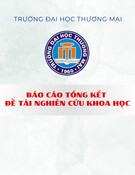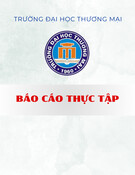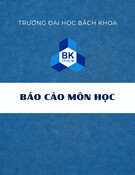
Original
article
Evaluation
of
the
effects
of
climatic
and
nonclimatic
factors
on
the
radial
growth
of Yezo
spruce
(Picea jezoensis
Carr)
by
dendrochronological
methods
Osamu
Kobayashi
a
Ryo
Funada
b
Koh
Yasue
b
Jun
Ohtani
b
a
Komeno-no
Forest
Research
Center,
Experiment
Forest
of
Ehime
University,
Ohino-machi
145-2,
Matsuyama,
Ehime
791-01,
Japan
b
Laboratory
of
Wood
Biology,
Department
of
Forest
Science,
Faculty
of
Agriculture,
Hokkaido
University,
Sapporo
060,
Japan
(Received
23
May
1997;
accepted
5
November
1997)
Abstract -
The
responses
to
climatic
and
nonclimatic
factors
of
Yezo
spruce
(Picea jezoensis
Carr)
trees
growing
in
a
natural
forest
in
Tomakomai,
Hokkaido
were
analyzed
by
dendrochronolog-
ical
methods.
The
effects
of climatic
factors
were
examined
by
response
function
analysis.
More
than
70 %
of
the
variance
of
ring-width
and
maximum-density
indices
was
explained
by
cli-
matic
data
from
1924
to
1965.
The
effect
of
nonclimatic
factors
on
radial
growth
from 1966
to
1990
was
analyzed
by
comparing
actual
indices
with
the
estimated
indices
of
ring
width
and
maximum
density
calculated
from
the
climatic
data.
Actual
ring-width
indices
were
lower
than
the
esti-
mated
indices
every
year
from
1969
to
1977.
Actual
maximum-density
indices
were
lower
than
the
estimated
indices
every
year
from
1971
to
1974.
These
results
indicate
that
some
noncli-
matic
factors
might
have
affected
both
ring
width
and
maximum
density
in
the
1970s.
(©
Inra/Elsevier,
Paris.)
Picea jezoensis
Carr
/
ring
width
/
maximum
density
/
X-ray
densitometry
/
response
function
analysis
Résumé -
Évaluation
des
effets
des
facteurs
climatiques
et
non
climatiques
sur
la
crois-
sance
radiale
de
l’épinettes
de
yezo
(Picea jezoensis
Carr)
par
les
méthodes
dendrochro-
nologiques.
Les
réponses
aux
facteurs
climatiques
et
non
climatiques
de
l’épinette
de
yezo
(Picea jezoensis
Carr)
ont
été
étudiées
dans
des
forêts
naturelles
du
Tomakomai,
dans
l’île
d’Hokkaido,
par
les
méthodes
dendrochronologiques.
Les
effets
des
facteurs
climatiques
ont
été
examinés
par l’analyse
de
fonctions
de
réponse.
Plus
de
70 %
de
la
variance
des
indices
de
lar-
*
Correspondence
and
reprints
E-mail:
funada@for.agr.hokudai.ac.jp

geur
des
cernes
annuels
et
de
densité
maximale
ont
été
expliqués
par
les
données
climatiques
de
1924
à
1965.
L’effet
des
facteurs
non
climatiques
sur
la
croissance
radiale
de
1966
à
1990
a
été
étudié
par
la
comparaison
des
indices
actuels
et
des
indices
estimés
de
largeur
des
cernes
annuels
et
de
densité
maximale,
calculés
d’après
les
données
climatiques.
Les
indices
actuels
de
largeur
des
cernes
annuels
pour
les
années
1969
à
1977
sont inférieurs
aux
indices
estimés.
Les
indices
actuels
de
densité
maximale
pour
les
annés
1971
à
1974
sont inférieurs
aux
indices
estimés.
Les
résultats
indiquent
que
des
facteurs
non
climatiques
affectent
probablement les
largeurs
de
cernes
annuelles
et
la
densité
maximale
au
cours
des
années
1970.
(©
Inra/Elsevier,
Paris.)
Picea jezoensis
Carr
/
largeur
de
cerne
annuel / densité
maximale
/
densitométrie
au
rayon-X
/
fonctions
de
réponse
1.
INTRODUCTION
Climate
is
one
of
the
most
important
factors
that
influences
the
variance
of
ring
widths
and
wood
densities
[14].
Statistical
methods
have
been
widely
used
to
assess
relationships
between
climatic
data
and
ring
widths
or
wood
densities
[3-5,
10,
14, 28].
However,
nonclimatic
factors,
such
as
air
pollution,
also
affect
the
vari-
ance
of
ring
widths
and
wood
densities
[12,
13, 19,
24,
26,
32].
Thus,
ring
widths
and
wood
densities
provide
records
of
the
effects
of
both
climatic
and
nonclimatic
factors
on
the
radial
growth
of
trees.
It
is
possible
to
evaluate
the
effects
of
noncli-
matic
factors
on
the
radial
growth
of
trees
in
the
past
by
comparing
actual
ring-width
or
wood-density
indices
with
estimated
indices
calculated
from
the
climatic
data
[6, 9].
Previous
studies
have
shown
that
vari-
ations
in
ring
widths,
ring
densities
or
maximum
densities
of
Sakhalin
spruce
(Picea
glehnii
Mast)
[23,
31],
Japanese
ash
(Fraxinus
mandshurica
Rupr
var
japonica
Maxim)
[30]
and
Norway
spruce
(Picea
abies
Karst)
[20]
trees,
which
are
growing
in
Hokkaido,
are
correlated
with
monthly
temperature
or
precipitation.
Yezo
spruce
(Picea jezoensis
Carr)
is
one
of
the
species
that
provides
the
longest
tree-ring
chronologies
in
Hokkaido,
Japan.
However,
no
dendrochronological
approach
to
an
understanding
of
the
effects
of
climatic
and
nonclimatic
factors
on
Yezo
spruce
has
been
reported.
Our
pre-
vious
study
[21,
22]
revealed
an
abrupt
decrease
in
ring
width
of
Yezo
spruce
and
Norway
spruce
trees
in
the
Tomakomai
forest,
which
is
located
near
an
industrial
district,
from
the
late
1960s
to
the
mid
1970s.
This decrease
might
have been
due
to
nonclimatic
factors,
such
as
air
pollu-
tion.
However,
the
variance
in
ring
widths
due
to
nonclimatic
factors
has
not
been
evaluated
by
statistical
analysis.
Thus,
it
is
necessary
to
characterize
the
effects
of
nonclimatic
factors
on
radial
growth
by
a
statistical
elimination
of
the
variance
in
ring
widths
or
maximum
densities
that
is
due
to
climate.
In
this
study,
the
statistical
relation-
ships
between
climatic
data
and
ring-width
or
maximum-density
indices
were
inves-
tigated
by
response
function
analysis
[14],
which
has
been
widely
used
to
assess
rela-
tionships
between
climatic
data
and
ring
widths
or
wood
densities.
We
investigated
the
influence
of
nonclimatic
stress
factors
by
comparing
actual
ring-width
or
maxi-
mum-density
indices
with
estimated
indices
calculated
from
the
response
func-
tions
that
corresponded
to
the
period
prior
to
the
onset
of
exposure
to
putative,
non-
climatic
stress
factors.
2.
MATERIALS
AND
METHODS
2.1.
Study
sites
We
examined
Yezo
spruce
trees
at
five
sites
in
the
natural
forest
at
the
National
Forest
of
the

Japan
Forestry
Agency
(Tomakomai
District
Office,
Tomakomai
City,
Hokkaido,
Japan;
figure
1).
The
cores
used
in
this
study
were
sampled
from
naturally
growing
Yezo
spruce
trees
with
little
human
treatment
such
as
thin-
ning
and
cutting.
The
topography
and
geology
of
the
five
sites
are
quite
similar.
Soils
are
com-
posed
of
shallow
A
horizons,
with
infertile
vol-
canogenous
regosols.
The
Tomakomai
Indus-
trial
District,
where
factories
began
operation
in
1968,
is
located
on
the
coast
in
Tomakomai
city.
The
distance
from
the
industrial
district
to
the
nearest
site
was
approximately
10
km,
and
that
to
the
most
remote
site
was
approxi-
mately
20
km.
All
sites
were
frequently
exposed
to
winds
from
the
industrial
district
from
April
to
September.
2.2.
Collection
and
treatment
of
samples
Fifteen
Yezo
spruce
trees
were
selected
from
the
five
natural
sites
(table
I).
The
trees
were
selected
to
represent
similar
site
condi-
tions
throughout
all
sites
to
minimize
any
vari-
ability
due
to
extraneous
factors.
Thirty
cores
in
all
were
collected,
with
two
cores
taken
from
different
directions
in
each
tree
at
breast
height.
The
cores
were
cut
into
2-mm-thick
strips,
and
then
they
were
dried
and
irradiated
with
soft
X-rays
at
15
kV
and
5
mA
for
240
s from
a
distance
of
1.5
m.
The
X-ray
films
were
scanned
with
a
microdensitometer
(PDS-15;
Konica,
Japan).
Ring-width
and
maximum-
density
series
were
obtained
by
application
of
the
Tree-Ring
Analysis
Program
(Y.
Nobori,
Faculty
of
Agriculture,
Yamagata
University,
1989).
2.3.
Crossdating
and
standardization
All
cores
were
crossdated
visually
by
skele-
ton
plot
procedures
[11,
29]
and
crossdating
was
later
verified
by
a
statistical
method
using
the
COFECHA
program
[18].
The
COFECHA
program
tests
each
individual
ring-width
and
maximum-density
series
against
a
master
dat-
ing
series
(mean
of
all
series)
on
the
basis
of
correlation
coefficients.
Careful
crossdating
eliminates
absent
and
false
rings,
as
well
as
measurement
errors,
which
reduce
the
statisti-
cal
accuracy
of
site
chronologies
of
ring
width
and
maximum
density.
Twenty-four
cores
from
13
trees
were
successfully
crossdated
(table
I).
All
24
series
are
plotted
in figure
2.

Crossdated
ring-width
and
maximum-den-
sity
series
were
standardized
to
eliminate
indi-
vidual
growth
trends,
such
as
age-related
declines
and
low-frequency
variance
due
to
natural
disturbance.
The
ring-width
and
max-
imum-density
series
were
standardized
by
first
fitting
a
trend
line
and
then
dividing
the
mea-
sured
data
by
the
corresponding
fitted
data
for
the
given
year.
A
stiff
spline-function
[8],
pass-
ing
50 %
of
the
variance
of
the
measured
series

at
frequencies
greater
than
70
years,
was
adapted
to
the
ring-width
series.
A
horizontal
line
that
crossed
the
mean
maximum-density
values
of
each
series
was
adapted
to
the
max-
imum-density
series.
Remaining
autocorrela-
tions
in
the
ring-width
and
maximum-density
series
that
might
adversely
affect
significance
tests
in
the
response
function
analysis
were
removed
by
pooled
autoregressive
modeling
[7].
Thus,
the
common
variance
in
ring-width
and
maximum-density
series
of
all
cores
that
was
due
to
climatic
and
regional
nonclimatic
factors
was
extracted
by
this
standardization
procedure.
Standardization
of
the
ring-width
and
maximum-density
series
was
performed
using
the
ARSTAN
program
(R.L.
Holmes,
Laboratory
of
Tree-Ring
Research,
University
of
Arizona,
1996).
Standardized
individual
ring-width
and
maximum-density
indices
were
averaged
using
the
arithmetic
mean
to
establish
the
master
chronologies
of
Yezo
spruce
at
Tomakomai
from
1828
to
1993
(figure
3).
Statistics
for
the
master
chronologies
of
ring-
width
and
maximum-density
indices
are
pre-
sented
in
table
I.
2.4.
Response
function
analysis
The
growth-climate
relationship
for
the
period
from
1924
to
1965
(n
=
42
years)
was
calculated
by
response
function
analysis
[2,
14,
17].
Response
function
analysis
is
a
multi-
ple-regression
technique
that
uses
principal
components
of
monthly
climatic
data
as
pre-
dictors
of
ring-width
and
maximum-density
indices
(the
predictands).
The
principal
com-
ponents
of
monthly
climatic
data
were
origi-
nally
used
to
eliminate
the
intercorrelations
between
the
predictor
variables
[14].
The
cal-
culation
of
response
functions
was
performed
with
the
PRECON
program
(H.C.
Fritts,
Den-
dro-Power,
Tucson,
Arizona,
1996)
[15].
Sim-
ple
correlation
was
also
calculated
to
confirm
the
results
of
response
functions
since
response






![Báo cáo seminar chuyên ngành Công nghệ hóa học và thực phẩm [Mới nhất]](https://cdn.tailieu.vn/images/document/thumbnail/2025/20250711/hienkelvinzoi@gmail.com/135x160/47051752458701.jpg)









